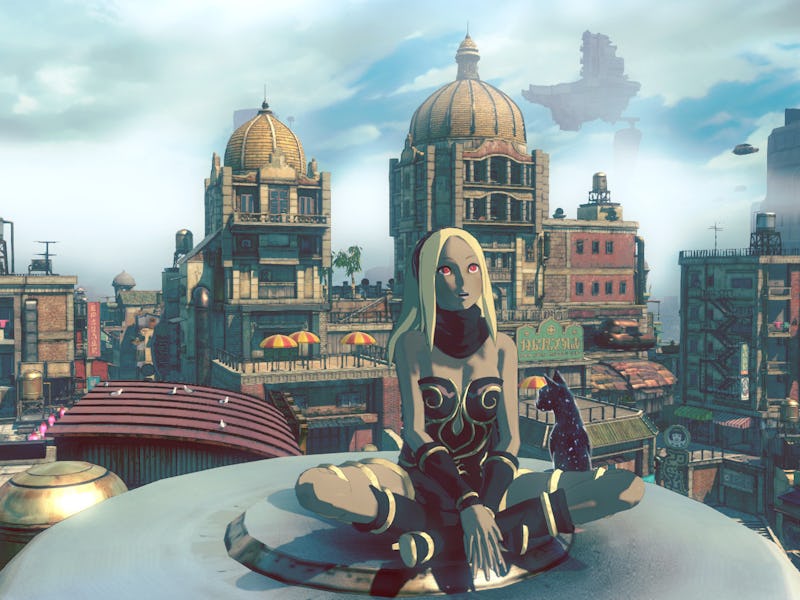The Best Part of 'Gravity Rush' Is Its Captivating World
It's not all gravity-swapping acrobatics.

When you’re thrown into Gravity Rush, everything seems a bit topsy-turvy as you try to get a grasp on the game’s unique gravity-shifting mechanics. A stubborn camera and equally stubborn controls don’t ease the process, but once you get a tenuous handle on things, you’re free to explore, leaving you to discover how Gravity Rush truly shines. For all of its flaws, the world of Gravity Rush is a stunning example of thoughtful game design and storytelling.
Floating in the sky, the city of Hekesville is a gritty sprawl threatened both by the “Gravity Storm” and the monsters called Nevi that the Storm summons to slowly throw things into chaos. Despite its troubles Hekesville is still very much a living and breathing city and one that draws people to the game. Our heroine, Kat, roams (or falls) through the city streets, interacting with passersby who reveal more about the world in a steady trickle. Some of these figures are well-marked on your map, while others need to be sought out. Even the more mundane tasks assigned to you, like delivering flyers, has purpose and builds the experience as you get to know the daily rhythm of the city and the concerns of its inhabitants. Traversing the city, getting to know its every corner as you seek to learn more, is a delight.
Hekesville draws you in at all angles.
Gravity Rush doesn’t force you to think about the world, though. Instead, the game encourages this exploration organically with quiet subtlety. Gravity Rush 2 establishes that premise further with expanded writing that really fleshes out the inhabitants of the city who are split by a troubling economic divide as the wealthy literally live above the poor. An interesting online component incentivizes you to go and see out these stories, as it sends you on treasure hunts across the game’s new locale, even rewarding your explorations with new clothes and furniture for your home.
The delicate world-building was a very deliberate process according to the game’s art director, Yoshiaki Yamaguchi, who described Gravity Rush’s creation in some depth at GDC the year the game was released. He said the keyword for the process was “Living Background.” Their goal, according to Yamaguchi, was “creating a sense that the character actually exists in that space, rather than trying to capture the art in the game as a picture.”
Explore to your heart's content ... until the bad guys get in the way.
Rather than taking a calculated, measured approach to level design, the team wanted to do exactly the opposite. “As soon as the player thinks that the background is just a picture, they stop consciously thinking about it,” he explained. “It’s a shame and a waste for the environment to just be a piece of art.” Rather than a static set piece that you wander through on your way to attaining your goal, players need to feel like they’re a part of the world, and the creators of Gravity Rush were careful to remember this. The environment designers worked very closely with the game designers to ensure that the gameplay would tie closely to the actual setting itself. Nearly five years and one sequel later, we think it’s safe to say that Yamaguchi achieved his goal.
Gravity Rush is a fine display of how to effectively create a world. It’s an incredibly important facet of game design that helps players form a bond with a game. Yet world-building can also be sacrificed for other elements, leaving a project to feel a little off and fall a little flat. It’s when you carefully work to make an interesting setting with these small details that games come alive, and Gravity Rush does this, so, so well.